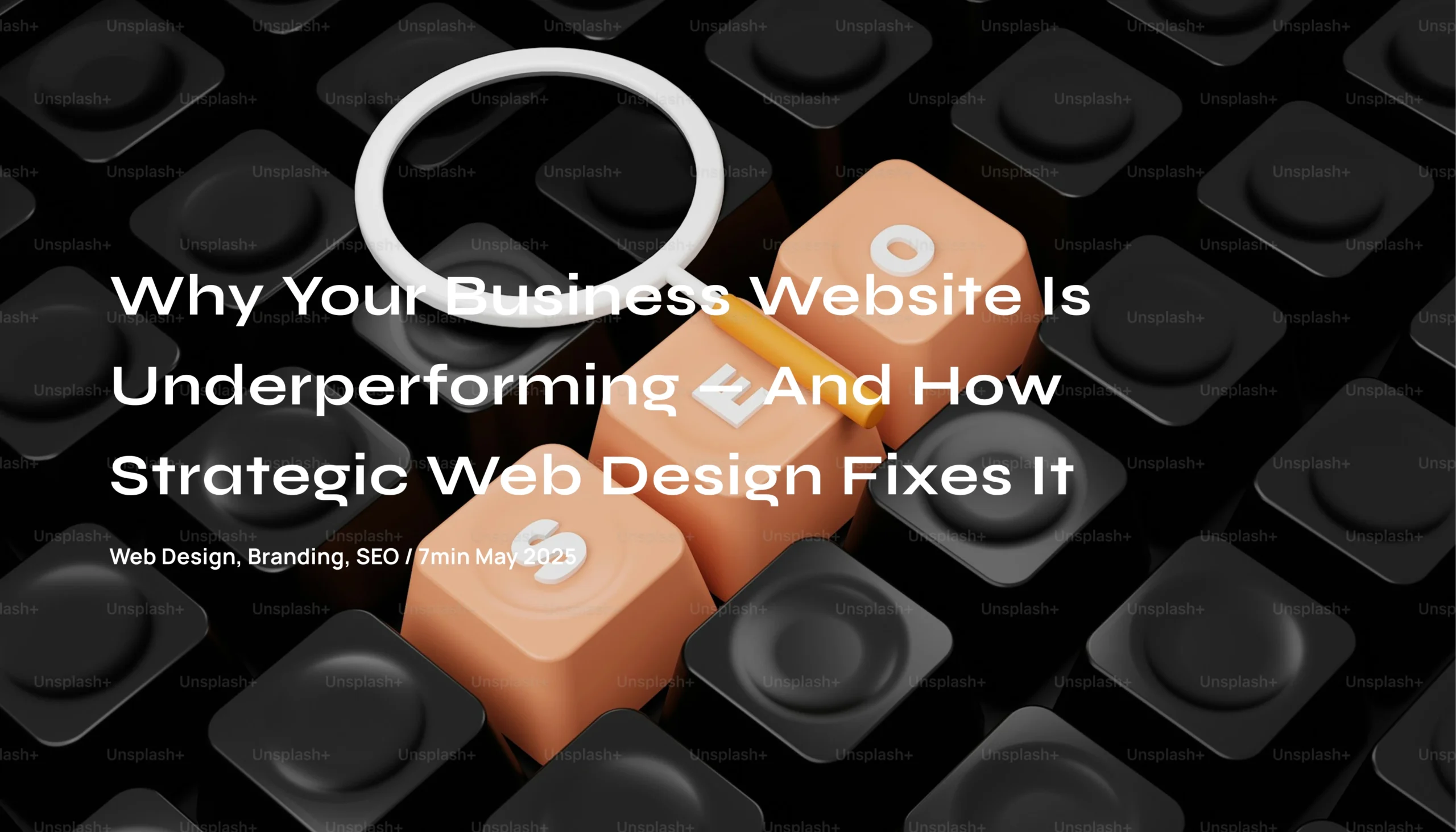In today’s digital world, your website is often the first impression potential customers have of your business. But what happens when that first impression falls flat? Maybe your site looks decent, but leads aren’t converting. Traffic is low. Bounce rates are high. Something just isn’t working.
The truth is: an underperforming website can silently cost you customers, credibility, and cash. The good news? Strategic web design can turn that around.
Let’s dive into why your website may be underperforming and how thoughtful design can help fix it.
1. Poor First Impressions
Visitors shouldn’t have to “figure out” your website. If they can’t find what they’re looking for in a few clicks, they’ll leave.
What Fixes It:
- A clear and intuitive menu structure
- Highlighting key pages (e.g. Services, About, Contact)
- Using breadcrumbs or search features for larger sites Good design simplifies navigation, helping users get where they need to go effortlessly.
2. Lack of Clear Calls-to-Action (CTAs)
Even if your site looks great, it won’t convert if you don’t guide users toward action. Do you want them to call, book, subscribe, or buy? If it’s not obvious, they won’t do it.
What Fixes It:
- Prominent buttons like “Book Now,” “Get a Quote,” or “Shop Now”
- CTAs placed at strategic points across the site
- Strong microcopy that tells users what happens next
Strategic CTAs drive engagement and move visitors from curious to committed.
3. Slow Loading Times
A slow website frustrates users and kills conversions. In fact, a 1-second delay can reduce customer satisfaction by 16%.
What Fixes It:
- Optimized images and code
- Reliable hosting
Minimal plugins and scripts Strategic design includes performance as a priority, not an afterthought.
4. Not Mobile-Friendly
More than half of website traffic comes from mobile devices. If your site isn’t responsive, you’re missing out — big time.
What Fixes It:
- Responsive layouts that adapt to all screen sizes
- Mobile-first design thinking
- Clickable elements spaced for finger taps
Designing for mobile users ensures your business looks good and functions well everywhere.
5. Weak Content and Visual Hierarchy
Your message may be strong, but if it’s buried in cluttered layouts or endless paragraphs, it’s getting lost.
What Fixes It:
- Clear visual hierarchy: headlines, subheadings, spacing
- Bite-sized content broken up with visuals
- Highlighting key benefits, not just features
Strategic design helps your message shine and makes your content easier to digest.
Designing for mobile users ensures your business looks good and functions well everywhere.
6. No SEO Strategy
A beautiful website doesn’t matter if no one can find it. Many underperforming websites have poor search engine visibility.
What Fixes It:
- SEO-friendly design structure (headings, metadata, alt text)
- Fast load speeds and mobile optimization (Google ranking factors)
- Keyword integration in both content and code
Designing with SEO in mind ensures your website gets seen by the right audience.
7. Lack of Trust Signals
Without elements that build credibility, visitors may hesitate to do business with you.
What Fixes It:
- Customer reviews and testimonials
- Trust badges or certifications
- Portfolio or case studies Strategic design incorporates trust signals that reassure visitors and boost conversions
Strategic Web Design Isn’t Just Pretty — It’s Purpose-Driven
A strategic website does more than just look good. It’s designed with purpose:
- To attract the right audience
- Guide them through a seamless experience
- And convert them into loyal customers
At its core, strategic design is about alignment — aligning your business goals with the user’s needs and behavior.
Final Thoughts: Don’t Settle for “Good Enough”
If your website is underperforming, you don’t need to start from scratch — but you do need a strategic redesign. Every element on your site should work together to drive results.
And the best part? Once your design is working for you, your website becomes a growth engine — not just an online brochure.
